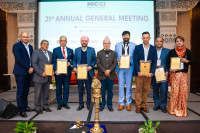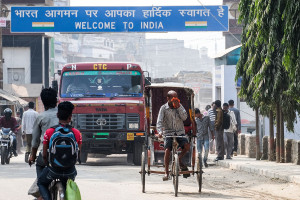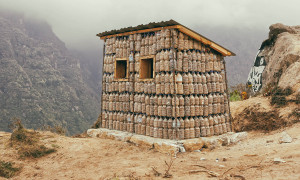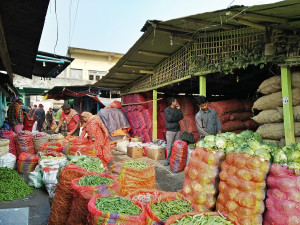Money
India yet to act on trade data sharing deal with Nepal
Some trade experts also criticise Nepal government’s poor commitment to prior exchange of information on exports and imports.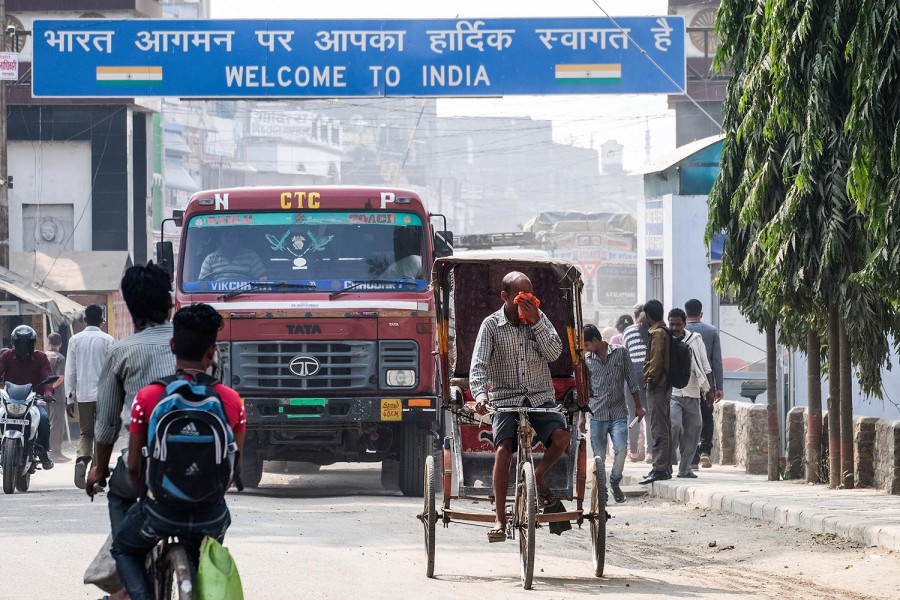
Krishana Prasain
On April 11, at the 21st Nepal-India Customs Administration Director General Level Meeting held in Kathmandu, India had agreed to implement the ‘pre-information system’ for export and import within a month. Yet, a month on, there is no visible progress.
According to Mahesh Bhattarai, director general of the Department of Customs, Nepal has already completed preparations for signing the Memorandum of Understanding (MoU) and is waiting for the Indian side to do its bit.
Bhattarai said Nepal’s proposal clearly outlines the framework for implementation, pending India’s signature.
Bhattarai from Nepal and Abhai Kumar Srivastav, director general of the Directorate of Revenue Intelligence from the Indian side, led the two-day bilateral customs meeting.
Bhattarai emphasised that once the pre-information exchange system is implemented, price accuracy in export and import transactions will be enhanced. It would reduce the chances of price manipulation, including over- or under-invoicing, and help prevent misuse of foreign currency.
The system is also expected to provide better insights into import revenue.
Once the MoU is reached, software will be installed at customs offices to enable real-time data on exchange of export and import goods, including detailed cargo descriptions.
Bhattarai said the customs systems of Nepal and India would be integrated, with India acting as a data-sharing portal to streamline the exchange process.
He expects the systems’ full integration to take two to four months following the MoU’s signing.
The exchange of pre-information will also play a vital role in curbing illegal trade between the two countries.
Trade and logistics expert Rajan Sharma said that such a system could significantly reduce corruption in customs operations.
He criticised the Nepal government for delaying its commitment to pre-information exchange, suggesting that the reluctance might stem from a desire to manipulate trade data.
According to Sharma, India has consistently pushed for such data exchange mechanisms.
Sharma highlighted the operational benefits of pre-information, explaining that it allows authorities and traders to know the nature of goods being traded, the types of warehouses required, the vehicles needed for transport, and the necessary logistical arrangements.
He noted that while the government often acknowledges the private sector’s role in economic development, it tends to sideline them in crucial negotiations where their inputs could help.
Sharma also pointed out that the government could access pre-information through Letters of Credit issued by Nepal Rastra Bank, even without formal data exchange.
He added that the World Trade Organisation has already provided for advance ruling and pre-clearance systems. Nepal’s participation in this pre-information initiative could help it align itself with international norms.
These systems allow goods to be traded through a faster customs procedure, such as green or grey channels, facilitating smoother trade.
Although Nepal currently uses an electronic cargo tracking system, Sharma noted that it only provides transport details and lacks comprehensive data on shipments’ contents. He reiterated that implementing a robust pre-information system would help reduce customs-related corruption.
Some insiders, however, have raised concerns over the necessity of involving governments in trade data exchange, arguing that the transactions primarily take place between private buyers and sellers.
They believe the government should instead focus on broader trade facilitation efforts. These include ensuring smooth and timely movement of goods, addressing theft during transit, and establishing clear policies for taxation when goods fail to reach their intended destinations.
In addition to the pre-information agreement, India agreed during the April meeting to recognise certificates of origin issued through Nepal’s National Single Window system.
This move is expected to simplify trade documentation and ease the flow of goods.
India further committed to building critical infrastructure in border areas to promote bilateral trade.
Discussions during the meeting also touched on Nepal’s concerns on the weight restrictions on cargo trucks along the Kakarbhitta-Phulbari-Banglabandha corridor.
Bhattarai confirmed that India agreed to treat Nepali freight on par with Indian freight in this corridor, which is expected to resolve some long-standing logistical issues.
Both sides also agreed to conduct joint inspections to curb illegal cross-border trade, highlighting a shared interest in strengthening enforcement mechanisms.
The Nepal-India Customs Administration Director General Level Meetings began in 1995 and are held annually, alternating between the two countries.
These meetings serve as a platform for resolving operational challenges in customs procedures, including the transit of Nepal’s third-country imports and exports through Indian territory. As such, they play a pivotal role in deepening trade and transit ties between the two nations.
India continues to be Nepal’s largest trading partner and its primary source of foreign investment. India also provides transit access for nearly all of Nepal’s third-country trade.
According to the commerce wing of the Indian Embassy in Kathmandu, India accounts for roughly two thirds of Nepal’s merchandise trade, a third of services trade, a third of foreign direct investment, nearly all of its petroleum supplies, and a substantial portion of inward remittances.
In the last fiscal year, bilateral trade between Nepal and India reached Rs1.09 trillion. Despite this large volume, Nepal’s exports to India dropped 3.28 percent year-on-year to Rs103.17 billion in the fiscal year 2023–24.
According to the Department of Customs, imports from India also declined, falling to Rs996.68 billion from Rs1.02 trillion the year before.




 19.12°C Kathmandu
19.12°C Kathmandu



